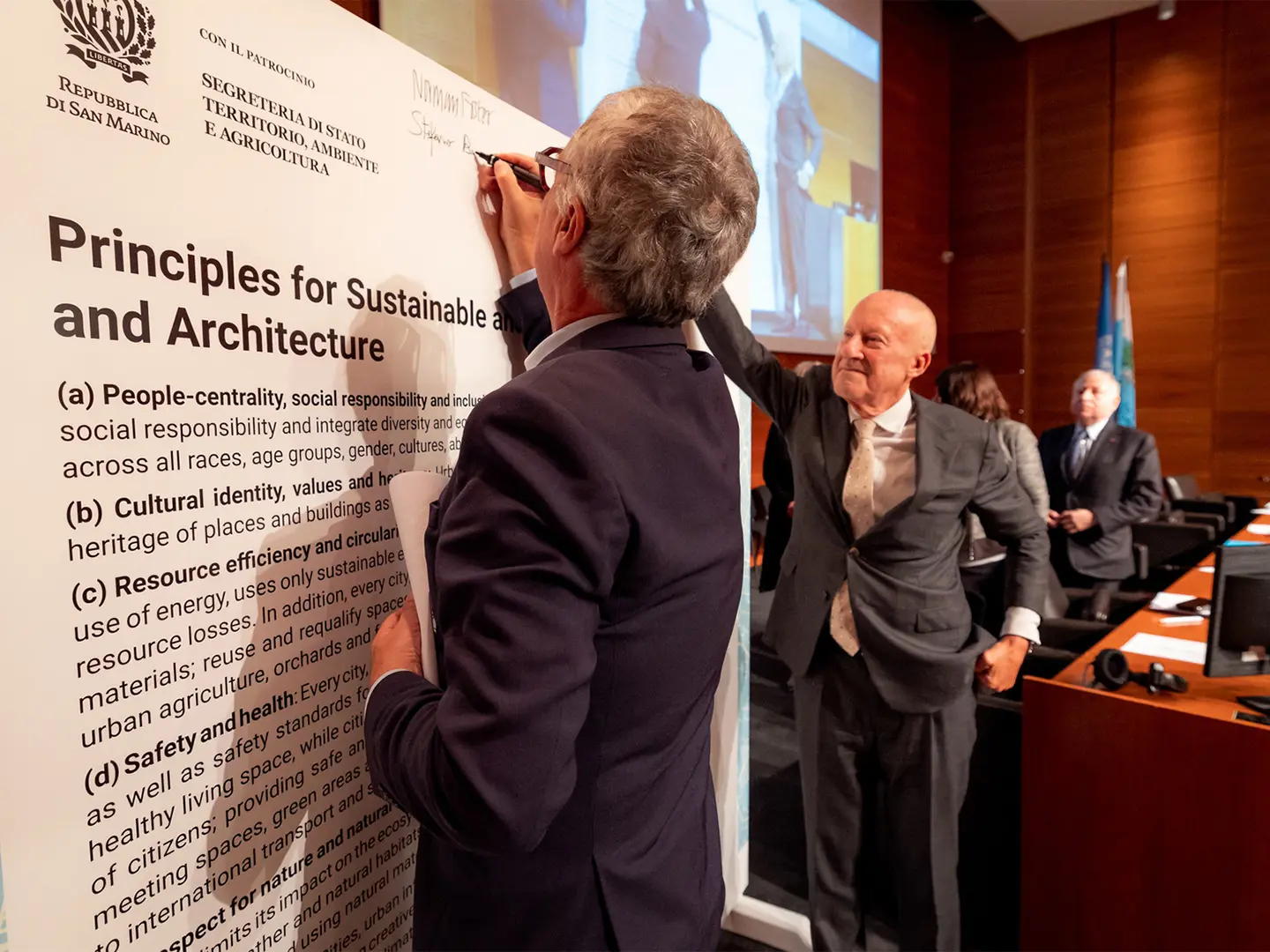From BIG to David Chipperfield, Frank Gehry to Snøhetta: a world tour of the best buildings set to open in 2026
The San Marino Declaration: UN guidelines for the cities of tomorrow

Bosco Verticale, ph. Gábor Molnár
Representing architects from the enlarged EU area, Norman Foster and Stefano Boeri and governments from fifty-six countries signed a list of principles for inclusive and sustainable urban design, underlining how quality city space lies at the heart of the environmental debate
Cities are on the front line in the climate fight for many reasons, not least as major contributors to the problem: 75 percent of global carbon dioxide emissions is produced by urban areas, and in the near future the world will have more cities and ever more city-dwellers. The UN estimates that by 2050, 68 percent of the world’s population will be city-dwellers (source: the revised World Urbanization Prospects report, compiled in 2018). Sprawling metropolises are expected to continue to proliferate, primarily in the global south and east, with India, China and Nigeria leading the way; the future of large urban agglomerations is just as crucial in our latitudes as well.
To improve the impact of these factors on the fabric of our cities in the third millennium, fifty-six European North American and Asian governments recently attended the 83rd UNECE (United Nations Economic Commission for Europe) Committee on Urban Development, Housing and Land Management. The proceedings concluded with signature of a policy document “in support of architects, engineers, surveyors, urban planners and designers in ensuring sustainable, safe, healthy, inclusive and climate-neutral housing, infrastructure and urban centres.”

Stefano Boeri and Norman Foster during the signing of the San Marino Declaration, 3rd October 2022, courtesy Stefano Boeri Architetti
Symbolically signed by Norman Foster and Stefano Boeri, two of the world’s most famous (and environmentally sensitive) architects, the San Marino Declaration includes a set of “Principles for Sustainable and Inclusive Urban Design and Architecture”. These guidelines span all stages of conceiving and implementing urban buildings and developments, improving on our multi-millennial model of the city.
“At this time in the history of the human species on this planet, architects and urban planners have the vital responsibility of minimizing carbon dioxide emissions and energy consumption, maximizing renewable energy capture devices, integrating increasing shares of biological and planted surfaces into buildings, and adapting to a sustainable, electrified mobility model based on the public transportation system,” Boeri said. “We’ll be taking this statement to COP27 in Sharm El Sheik in November as an appeal to architects, and are committed to gathering as many signatories as possible.”
These guidelines were inspired by core value compliance with the housing and environmental standards promoted in the charter, seeking out efficiencies and circularity and, all the while, taking into consideration the local cultural identity. At all times, architects and other urban planning and construction professionals must consider the impact their work has on community well-being. They are encouraged to adopt a human-centered approach, listening to individual and collective needs, and integrating diversity.
On the technical front, the guidelines limit energy and natural resource consumption through reuse and recycling wherever possible, reusing rainwater and encouraging zero-mile food production in urban gardens, orchards and edible forests (a.k.a. “food forests”: artificial ecosystems with a variety of plant and animal species that function autonomously, requiring no maintenance or regular intervention).
Climate neutrality is pursued through urban design and redevelopment, integrating clean energy systems directly into buildings and adopting “creative solutions to reduce pollution and energy consumption”. For planners, this new environmental consciousness requires undertaking meticulous ecological impact assessments at the preliminary stage of all projects, allocating space for greenery and urban biodiversity, and ensuring pedestrian accessibility and/or the availability of sustainable transportation. The charter also addresses building and infrastructure resilience to withstanding the extreme weather events that are increasingly likely to affect even temperate zones like Europe.


 Sustainability
Sustainability








